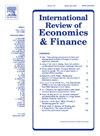Which assets are safe havens? Evidence from 13 stock market downturns
IF 5.6
2区 经济学
Q1 BUSINESS, FINANCE
引用次数: 0
Abstract
This study investigates the safe haven (SH) efficacy of 11 assets against 13 stock market downturns, utilizing data from the MSCI World Index, MSCI Emerging Markets Index, and stock indices of the five largest economies. Our comprehensive analysis reduces the likelihood that identified SHs reflect the idiosyncrasies of specific events or markets, enabling us to systematically document which assets serve as SHs in particular types of crises. Our findings reveal three key insights. First, the effectiveness of SH assets varies depending on the nature of the downturn. Government bonds tend to be effective SHs during downturns triggered by macroeconomic or financial market events, as these downturns are typically associated with lower inflation and interest rates. Conversely, geopolitical conflicts often diminish the SH properties of government bonds. Second, the geographical and financial proximity of the SH asset to the source of the downturn affects its efficacy. Assets from countries directly involved in or closely connected to the crisis are less likely to serve as SHs. Third, Japan's minimal involvement in geopolitical conflicts has established the Japanese Yen and Japanese government bonds as the most reliable SHs during such conflicts.
哪些资产是安全港?13次股市下跌的证据
本研究利用MSCI世界指数、MSCI新兴市场指数和五大经济体的股票指数数据,考察了11种资产在13次股市下跌时的避险效果。我们的综合分析降低了已识别的稳定市场反映特定事件或市场特质的可能性,使我们能够系统地记录哪些资产在特定类型的危机中充当稳定市场。我们的发现揭示了三个关键的见解。首先,房地产资产的有效性取决于经济低迷的性质。在宏观经济或金融市场事件引发的经济衰退期间,政府债券往往是有效的避险工具,因为这些经济衰退通常与较低的通胀和利率有关。相反,地缘政治冲突往往会削弱政府债券的SH属性。其次,上海资产在地理和金融上与经济低迷的源头接近,影响了其效力。直接卷入危机或与危机密切相关的国家的资产不太可能成为稳定资产。第三,日本极少参与地缘政治冲突,这使得日元和日本政府债券成为此类冲突中最可靠的避险工具。
本文章由计算机程序翻译,如有差异,请以英文原文为准。
求助全文
约1分钟内获得全文
求助全文
来源期刊
CiteScore
7.30
自引率
2.20%
发文量
253
期刊介绍:
The International Review of Economics & Finance (IREF) is a scholarly journal devoted to the publication of high quality theoretical and empirical articles in all areas of international economics, macroeconomics and financial economics. Contributions that facilitate the communications between the real and the financial sectors of the economy are of particular interest.

 求助内容:
求助内容: 应助结果提醒方式:
应助结果提醒方式:


